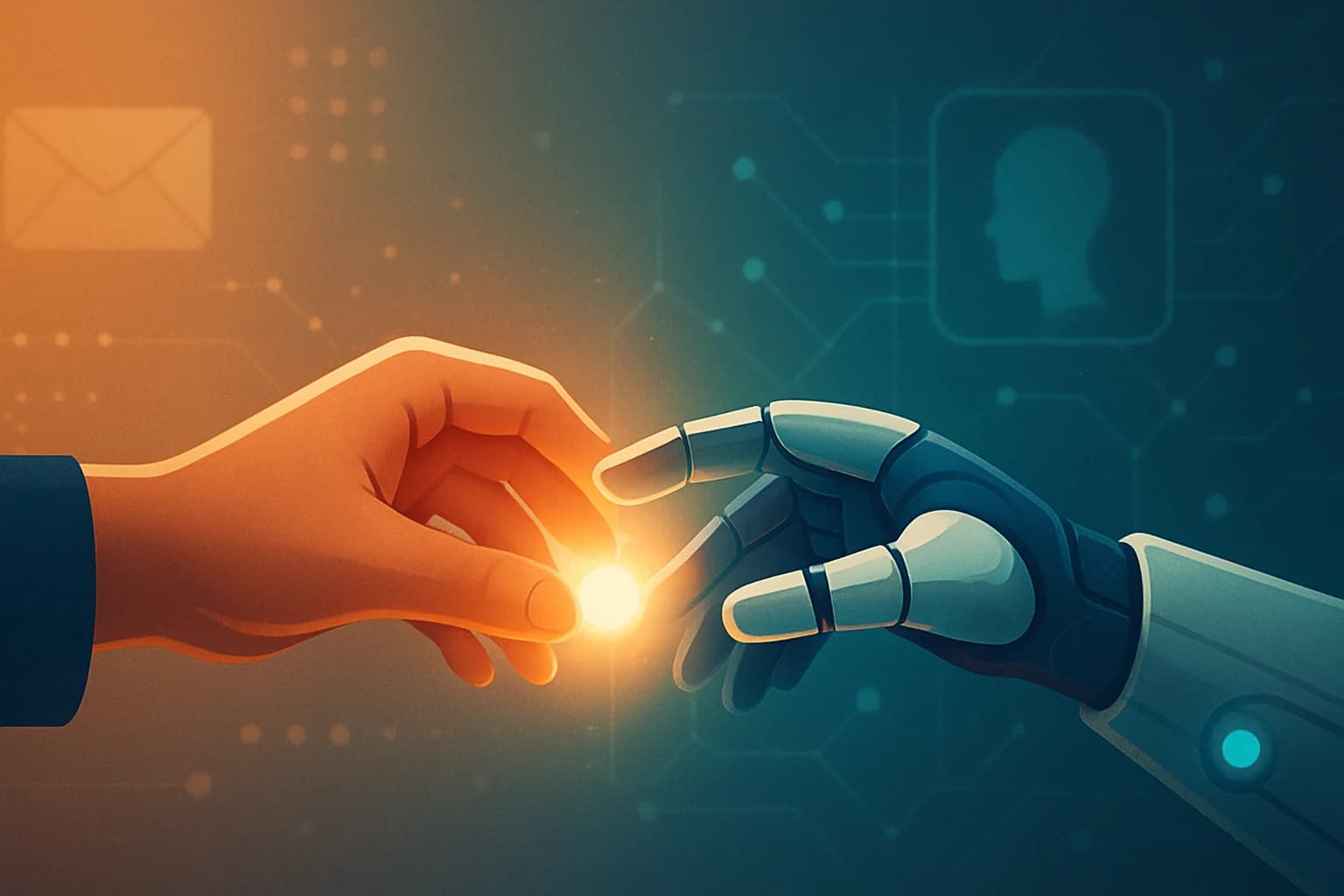The New Workplace Reality: Teams That Include Both Humans and AI
Today's organizational landscape is undergoing a profound transformation as AI human collaboration becomes increasingly common in workplaces around the world. The integration of artificial intelligence into teams that were once exclusively human is creating new psychological dynamics that organizations must understand and navigate effectively.
In this mixed workforce reality, the psychology of human-agent teams emerges as a critical factor that can determine the success or failure of these collaborations. Research shows that effective AI team building requires more than just technological implementation—it demands a deep understanding of the psychological underpinnings that shape how humans and AI agents interact, communicate, and build trust.
The Psychology of Trust in Human-Agent Teams
Why Trust Matters in AI Human Collaboration
Trust serves as the fundamental psychological foundation for effective teamwork, regardless of whether team members are human or artificial. When humans and AI agents work together, trust becomes even more crucial due to several factors:
- Unfamiliarity and uncertainty: Limited experience with AI collaboration breeds skepticism.
- Competence assessment challenges: Humans misjudge AI capabilities—either too much or too little.
- Attribution of intention: People seek intent in actions, even in agents that operate on algorithms.
- Responsibility and accountability: Blurred lines on who’s to blame (or praise) erode confidence.
Initially, humans may show either automation bias (over-trusting) or automation aversion (under-trusting). The calibration of trust—based on experience—is vital for success.
The Components of Trust
Trust in AI contexts has unique psychological dimensions:
- Perceived Competence: Does the AI do its job reliably?
- Perceived Benevolence: Is the AI aligned with human goals and responsive?
- Perceived Integrity: Does the AI behave transparently and ethically?
Psychological Barriers to Human-AI Cooperation
1. Mental Model Misalignment
Different assumptions and worldviews between humans and AI lead to:
- Miscommunication
- Mismatched expectations
- Difficulty in coordination
2. Anthropomorphism & Its Limits
Treating AI like humans can:
- Build initial rapport
- But lead to unrealistic expectations and disappointment
3. Fear of Replacement
The biggest elephant in the room:
- Workers fear job loss
- This causes knowledge hoarding, resistance, and trust erosion
Strategies to Build Trust
1. Transparent Capability Communication
- Spell out what AI can/can’t do
- Share system changes and limitations
- Be honest about unknowns
2. Progressive Trust Development
- Start with low-risk collaborations
- Gradually increase complexity
- Celebrate milestones and small wins
3. Shared Mental Models
- Train humans in AI’s logic and reasoning
- Ensure AI explains decisions
- Use a common language for goals and processes
4. Meaningful Human Control
- Human override on critical calls
- Define autonomy boundaries clearly
- Encourage shared decision-making
Case Study: Financial Advisory Teams
A major financial firm deployed AI to support human advisors:
- Step 1: Introduced AI with full transparency
- Step 2: Assigned AI only low-risk tasks initially
- Step 3: Gradually expanded responsibilities
- Step 4: Built feedback loops with both clients and advisors
- Result: +34% client satisfaction, +28% advisor productivity
The Evolving Psychology of Human-Agent Teams
1. From Tools to Teammates
Future AI will:
- Show emotional intelligence
- Communicate fluidly
- Adapt to individual human workstyles
2. Bidirectional Trust
AI will also work to gain human trust via:
- Monitoring human trust levels
- Adapting behavior in real time
- Proactively repairing breakdowns
3. Shared Identity
True mixed teams will form collective identities:
- Roles defined by strength, not species
- Emphasis on synergy, not substitution
Organizational Playbook
Preparation & Training
- Align expectations
- Address fear early
- Reassure job purpose and role evolution
Design & Implementation
- Assign roles based on complementary strengths
- Ensure smooth communication
- Build regular feedback cycles
Support & Adaptation
- Reflect and adapt the team process
- Provide psychological support for change
- Encourage AI to grow with the team
Conclusion: Trust Is the Hidden Infrastructure
Technology is not enough. Success in human-agent teams rests on trust, understanding, and respect. Organizations that nurture this psychological infrastructure will lead the future of collaboration—where humans and AI not only coexist but co-elevate.
🔑 Key Takeaways
- Trust calibration is central to collaboration.
- Humans need clear, gradual, and honest AI integration.
- Overcoming fear and aligning mental models builds real synergy.
- Future AI will take an active role in maintaining trust.
- The best teams will be built on partnership, not replacement.

